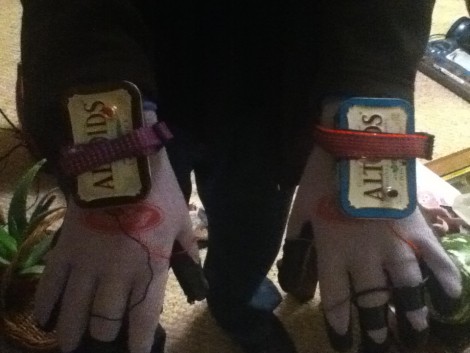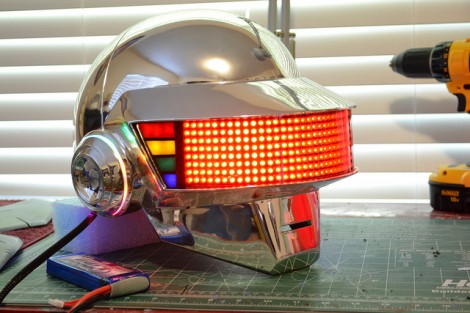
From a small-sized backpack these wings slowly grow to full size in a Steampunk costume that hearkens back to DaVinci flight designs.
The mechanism that unfolds the wings was fashioned from parts of a baby gate and an old back massager. The massager features a pair of orbs that are meant to move slowly up and down your back. This is what accounts for the slow unfurling of the wings. After a bit of prototyping with Popsicle sticks [Dannok] and his daughter figured out the best arrangement for the pivoting skeleton. From there, the slats from the baby-gate were used to build the frame, then covered with fabric to finish the wing element for this Halloween costume.
A 12 volt gel battery powers the device, which is activated with a brass pull-chain meant for a light fixture. Once full extended, as seen above, the wingspan is eight feet. Don’t miss the pair of videos we’ve embedded after the break which show the workings of the device.
















